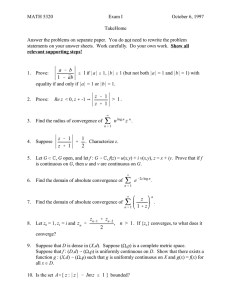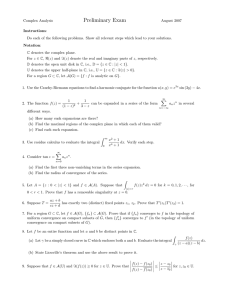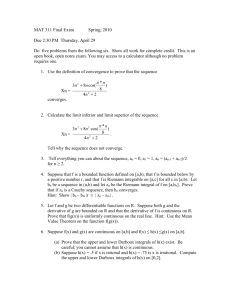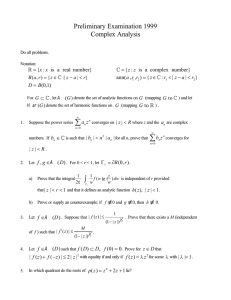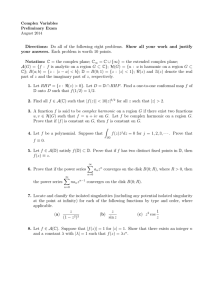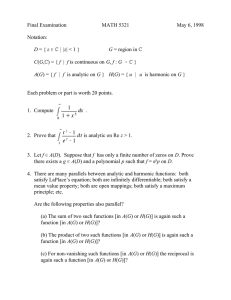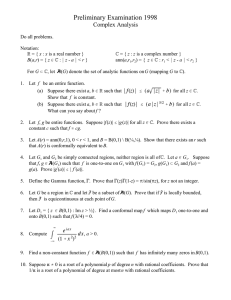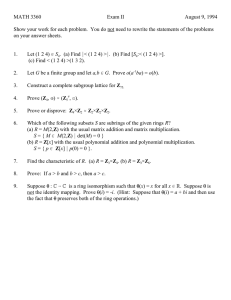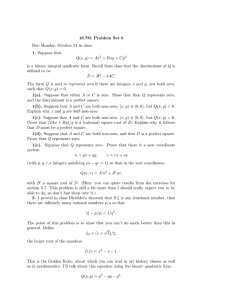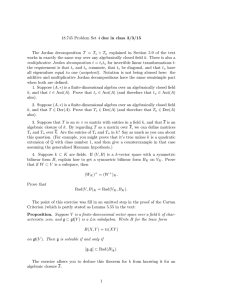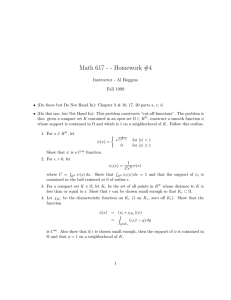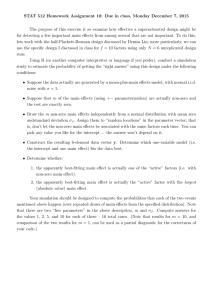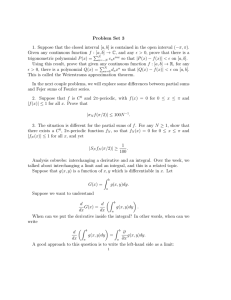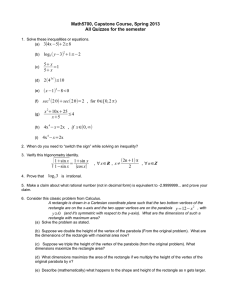Problem Set 2
advertisement
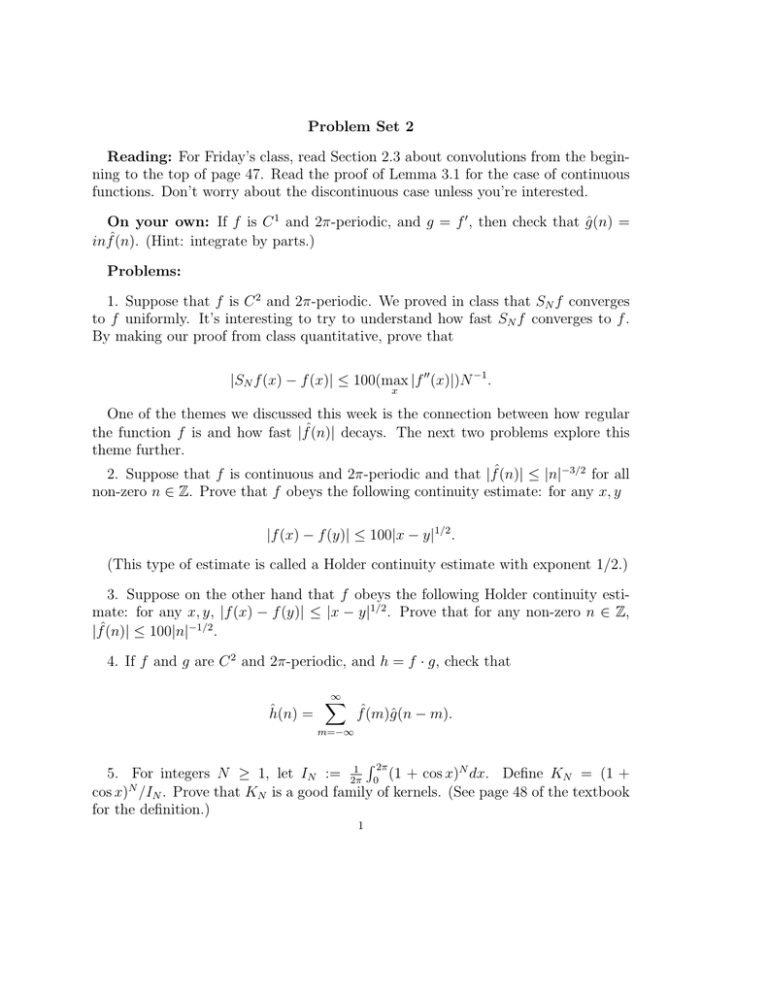
Problem Set 2 Reading: For Friday’s class, read Section 2.3 about convolutions from the beginning to the top of page 47. Read the proof of Lemma 3.1 for the case of continuous functions. Don’t worry about the discontinuous case unless you’re interested. On your own: If f is C 1 and 2π-periodic, and g = f 0 , then check that ĝ(n) = infˆ(n). (Hint: integrate by parts.) Problems: 1. Suppose that f is C 2 and 2π-periodic. We proved in class that SN f converges to f uniformly. It’s interesting to try to understand how fast SN f converges to f . By making our proof from class quantitative, prove that |SN f (x) − f (x)| ≤ 100(max |f 00 (x)|)N −1 . x One of the themes we discussed this week is the connection between how regular the function f is and how fast |fˆ(n)| decays. The next two problems explore this theme further. 2. Suppose that f is continuous and 2π-periodic and that |fˆ(n)| ≤ |n|−3/2 for all non-zero n ∈ Z. Prove that f obeys the following continuity estimate: for any x, y |f (x) − f (y)| ≤ 100|x − y|1/2 . (This type of estimate is called a Holder continuity estimate with exponent 1/2.) 3. Suppose on the other hand that f obeys the following Holder continuity estimate: for any x, y, |f (x) − f (y)| ≤ |x − y|1/2 . Prove that for any non-zero n ∈ Z, |fˆ(n)| ≤ 100|n|−1/2 . 4. If f and g are C 2 and 2π-periodic, and h = f · g, check that ĥ(n) = ∞ X fˆ(m)ĝ(n − m). m=−∞ R 2π 1 5. For integers N ≥ 1, let IN := 2π (1 + cos x)N dx. Define KN = (1 + 0 N cos x) /IN . Prove that KN is a good family of kernels. (See page 48 of the textbook for the definition.) 1 2 6. (On partial sums vs. Fejer sums) Suppose that f ≥ 0 is a continuous 2π-periodic function. Does it follow that SN f ≥ 0? Does it follow that σN f ≥ 0? Explain your answers.

